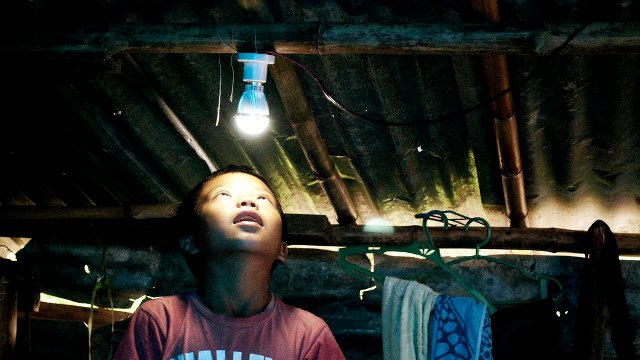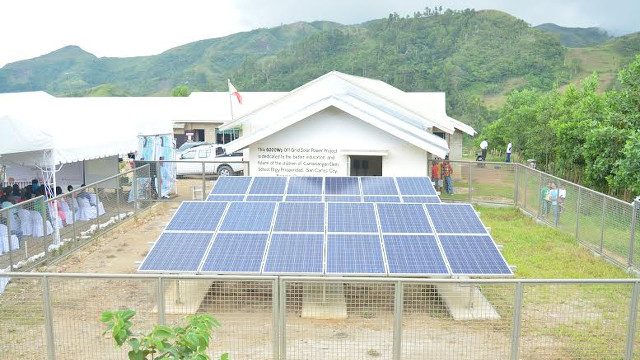SUMMARY
This is AI generated summarization, which may have errors. For context, always refer to the full article.

MANILA, Philippines – Renewable energy is expected to help the Philippine government light up the 4,954 sitios that remain without electricity.
This was the pronouncement of energy officials during a meeting with German renewable energy companies on Monday, October 26.
The government is on track to meet its target of electrifying 90% of households in the Philippines by 2017. The biggest gaps are in the small villages called sitios, many of which are in far-flung areas difficult to connect to power grids in the more developed parts of the country.
The answer, said Ed Piamonte of the National Electrification Administration, is renewable energy plants.
“We have to provide [these sitios] with electric service not connected to the grid but with potential for grid integration. We are looking forward to solar home systems, or solar power plants that can be integrated with existing power plants,” he said.
He said these remote sitios are the “last mile” of the electrification program which began by energizing towns, cities, and barangays.
As of October 15, the government has been able to electrify all of its 1,475 target cities and municipalities, said Piamonte. Almost all or 99.97% of targeted barangays also have electricity. As for sitios and puroks, 95.21% have been energized, leaving 4,954 sitios still waiting for power.
These sitios are scattered almost evenly across the country’s major regions.
Luzon has 1,471 unenergized sitios, the Visayas has 1,855, while Mindanao has 1,628. This current state is still an improvement from how things were in 2011 when 32,441 sitios were without power.
Private sector needed
The government is counting on the private sector to put up renewable energy plants to help electrify the remaining sitios.
Through the Renewable Energy Act of 2008, the government provides RE companies with financial mechanisms and incentives to encourage them to build RE facilities in the country. (READ: DOE okays 622 renewable energy contracts)

Peter Kompalla of the German-Philippine Chamber of Commerce and Industry called the Philippines the “most dynamic market in ASEAN, and most promising for RE.”
German companies are among many investors applying to put up RE plants in the country. These include solar rooftop power plants, mini-hydro plants, and wind farms.
But major challenges confront RE companies when trying to put up RE plants in remote areas.
The location of the areas make bringing equipment there difficult and costly, said Jens Kompauer of German company IB Vogt GmbH. The low population in these areas also mean lower demand for electricity.
Typically, the potential power users are not even able to afford the green energy, making it necessary for RE companies to seek financial assistance from banks or other institutions.
Maintaining 30% target
Then there’s the bureaucracy that leads to unexpected delays.
Applying RE companies say the complex permitting system and redundancies in the application process can be streamlined further.
The RE technology itself needs to overcome the perennial problem of energy storage. The lack of batteries that can store large amounts of electricity after it is converted from sunlight to wind energy means RE is still not as stable a power source as, say, a coal power plant.
This is why in hybrid energy plants that use partly RE and diesel-powered generation sets, the diesel component is still the major source of energy instead of being the source of last resort.
Despite these challenges, DOE Renewable Energy Management Bureau chief Mario Marasigan said the government is fully committed to its goal of ensuring at least 30% of the country’s energy supply comes from RE.
This means RE will have to catch up with the number of coal power plants being approved. Marasigan admitted that in Mindanao for example, the development of coal projects is faster than the development of RE projects.
German Ambassador Thomas Ossowski hailed the Philippines’ RE targets as a way by which it can cut its greenhouse gas emissions.
Coal-fired power plants are a major source of GHG emissions and the shift to RE is seen as a way to reduce these emissions.
The Philippines has committed to reduce its GHG emissions by 70% by the year 2030 with aid from the international community. – Rappler.com
Add a comment
How does this make you feel?
There are no comments yet. Add your comment to start the conversation.